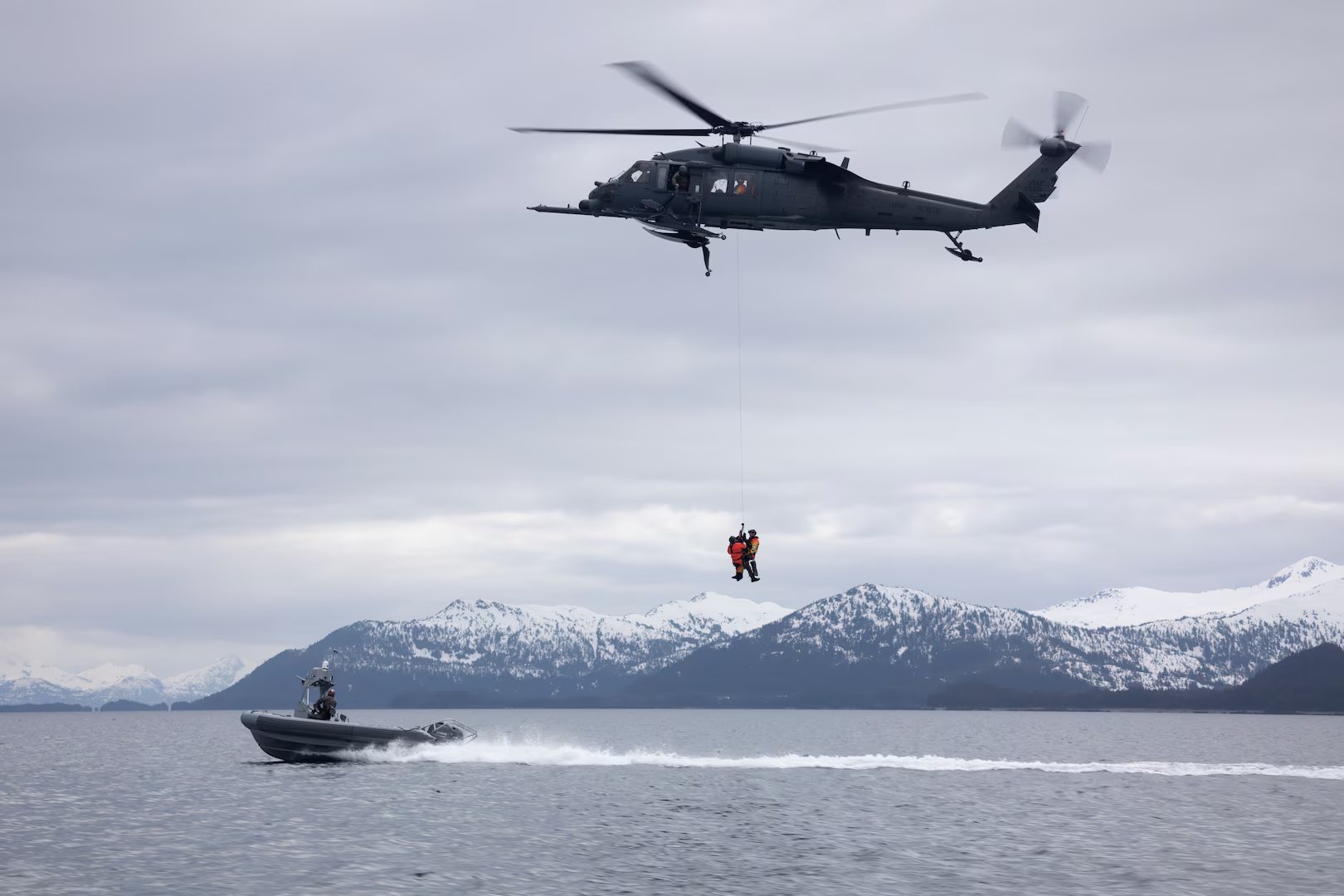Alaska Air Guard Rescue Triad Conducts Water Rescue Training
NEWS | June 6, 2024
Alaska Air Guard Rescue Triad Conducts Water Rescue Training
By Alejandro Peña, Alaska National Guard Public Affairs
WHITTIER, Alaska - Alaska Air National Guardsmen from the 176th Wing’s 210th, 211th and 212th Rescue Squadrons conducted water rescue operations training in the Prince William Sound near Whittier May 14-16.
The training included search and rescue, low- and high-altitude parachute drops, emergency medical response, personnel recovery, and underway hoist.
Participants included HH-60G Pave Hawk aircrew of the 210th RQS, HC-130J Combat King II aircrew of the 211th RQS, and pararescuemen (PJs), survival, evasion, resistance, and escape (SERE) specialists, and geospatial intelligence specialists of the 212th RQS.
The three squadrons comprise the 176th Wing’s Rescue Triad and are among the busiest search and rescue units in the Air Force.
Combat rescue officers, PJs, and SERE specialists — known collectively as Guardian Angels — are experts in personnel recovery operations and are trained to infiltrate behind enemy lines to extract isolated U.S. and allied personnel. The Pave Hawk aircrew is trained to use the helicopter’s sensor suite to find isolated personnel. They also can insert Guardian Angels by landing or using the HH-60’s rescue hoist.
The Combat King is trained to use the propeller-driven aircraft’s advanced avionics to find isolated personnel from higher altitudes and faster airspeeds than the HH-60. It can insert Guardian Angels by low- or high-altitude parachute drops.
The HH-60 is the primary means of extraction since the all-weather helicopter can land in austere locations and the crew can employ the rescue hoist when landing is impossible. To extend the range of the Pave Hawk, the HC-130 deploys refueling drogues from pods underneath the wings to refuel the Pave Hawk in flight.
While the Rescue Triad’s military mission stands alert in support of the 11th Air Force and Alaska NORAD Region, it also provides Alaska residents and visitors with specialized civil SAR capabilities. Alaska has nearly 34,000 miles of shoreline — more than all the lower 48 states combined. Water operations training hones water-rescue capabilities and the ability to operate in Alaska’s challenging environment.

